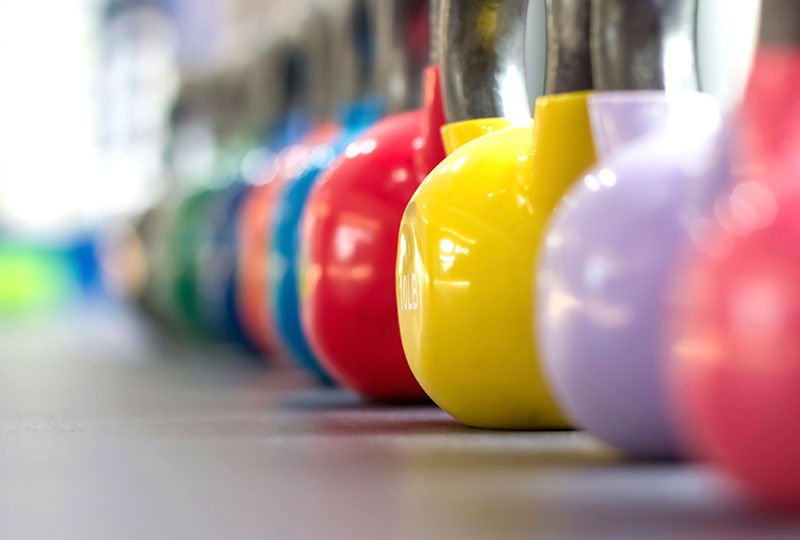Want an exercise plan that uses only one tool, but targets many muscles? We’ve got you covered.
If you want to get a workout in but don’t have time for the gym, kettlebell exercises can be your best friend. With only one tool and some room to work, you’ll be able to target multiple muscles and mix it up.
Kandice King, CSCS, CPT, strength and conditioning coach for Vanderbilt women’s basketball, says kettlebells use dynamic movement, targeting almost every aspect of fitness: strength, power, balance, agility and cardio endurance.
“These cannonball-like weights work the body’s major muscle groups while encouraging an increase of lean body mass and core strength,” King says. “The U-shaped handle of the kettlebell changes how the weight works with the body. The momentous movement of the kettlebell creates a centrifugal effect on the body’s need to use more stabilizers especially while controlling the deceleration of the movements.”
According to King, this type of multidirectional training mimics real-life movements and has many benefits:
- Helps to create better posture and alignment
- Increases bone mass density
- Increases power development and endurance
- Improves coordination and agility
- Promotes reduced risk of injury when properly executed while using the proper amount of weight
- Promotes improved athletic performance
- Promotes more efficiency in other types of exercise
- Promotes an extended calorie burn after the workout has been completed
The American College of Sports Medicine cautions that free weight workouts like kettlebell exercises can be a safe and effective means of improving strength and fitness but that they require more muscular coordination than machines. The risk of injury is also higher. Consulting with an exercise professional is key.
King says starting with a program of basic kettlebell exercises is recommended (after receiving clearance to complete an exercise program by a physician). Complete the following exercises in order to promote an effective workout with long-lasting calorie-burning effects. Begin with one set of each exercise, and complete 12 to 15 reps. As you are ready to progress, begin increasing the amount of sets completed (up to four).
1. Goblet Squat
Begin with the feet wider than the hips, and grip the kettlebell on the corners with the kettlebell held in the center of the chest. Inhale, slowly lower the hips toward the floor while keeping the trunk upright. Exhale to push through the heels and extend the knees to return to the starting upright position.
Targeted muscles: Quadriceps, hamstrings, glutes, trunk, shoulders
2. Tactical Lunge
Begin in a split stance position with the left foot forward and the feet hip width apart. Grip the kettlebell in the right hand. Keeping the weight in the left front heel, bend in both knees to slowly lower the legs toward the floor as the right hand reaches forward to pass the kettlebell into the left hand and behind the left leg. Pass the kettlebell back to right hand as the knees extend and the trunk lifts upright finishing in the starting position. Complete all reps on the right side, and proceed to the left side grip.
Targeted muscles: Quadriceps, hamstrings, glutes, trunk, shoulders
3. Single-Leg Deadlift with Unilateral Row
Begin in a split stance position with the left foot forward and the feet hip width apart. Grip the kettlebell in the right hand. Keeping your weight in the left front heel with the left knee slightly bent, exhale to hinge from the waist while slowly lowering the trunk to the left thigh. Inhale and stabilize the trunk while retracting the shoulder, bending in the elbow to pull the kettlebell to the right hip. Slowly extend the right elbow, exhale to push through the left heel and left knee to stand erect, finishing with the shoulders over the hips. Complete all reps on the right side, and proceed to the left side grip.
Targeted muscles: Hamstrings, glutes, trunk, shoulders

Having trouble sleeping? Check out five yoga poses you can do to help calm your brain before bed.

